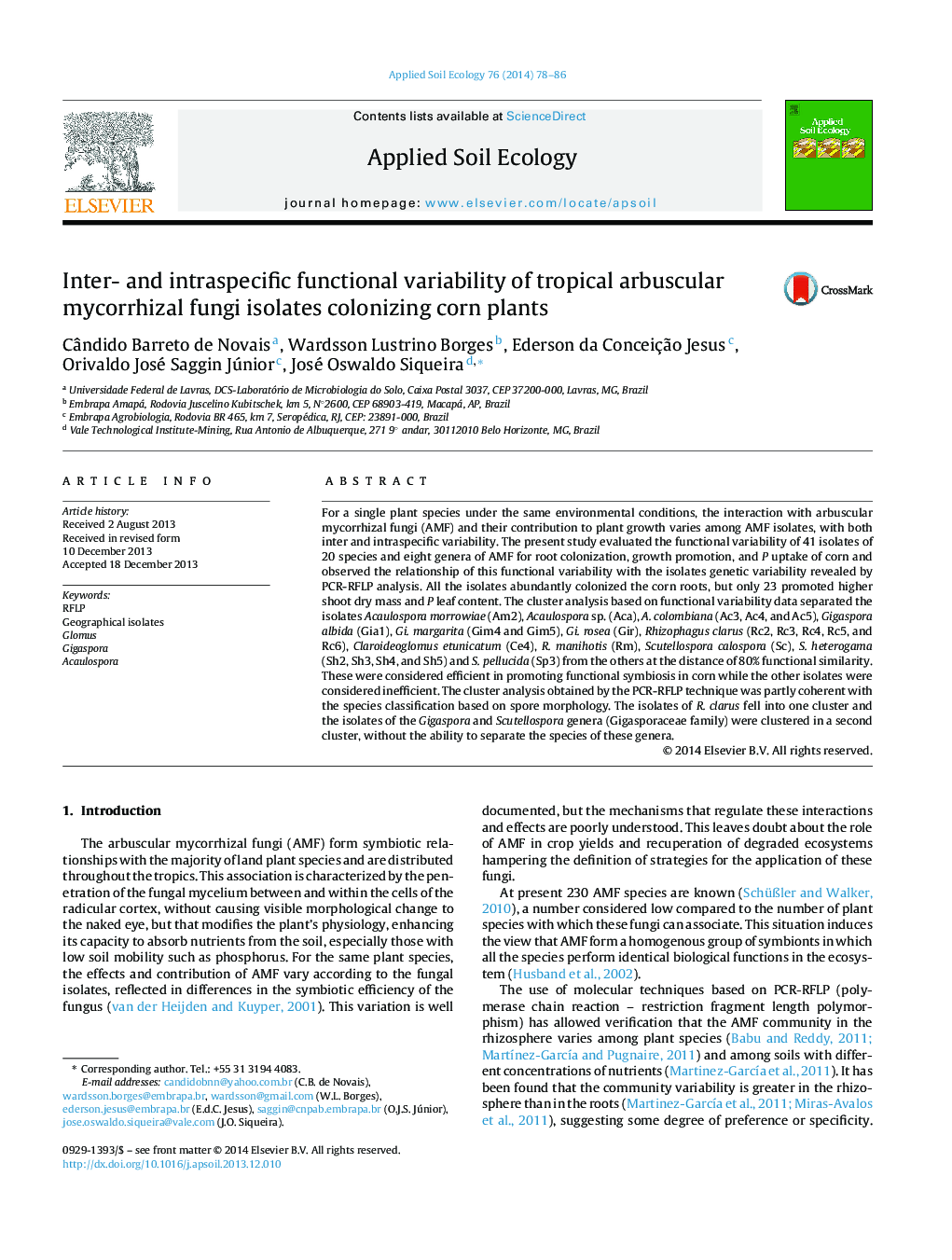| کد مقاله | کد نشریه | سال انتشار | مقاله انگلیسی | نسخه تمام متن |
|---|---|---|---|---|
| 4382263 | 1617807 | 2014 | 9 صفحه PDF | دانلود رایگان |
• All isolates abundantly colonized the corn roots, but only 23 promoted higher growth and P content.
• The ability to promote growth and P nutrition was independent of the origin of the isolates.
• Physiological responses were related to the ability of the fungi to provide P to the host in 93% of the fungus-plant combinations.
• Functional variability can be greater between isolates of the same species than between isolates of distinct species.
• The morphological characterization agreed with the genotypic characterization by 18S rDNA PCR-RFLP and sequencing.
• R. clarus and S. heterogama isolates were consistently efficient in promoting corn growth.
For a single plant species under the same environmental conditions, the interaction with arbuscular mycorrhizal fungi (AMF) and their contribution to plant growth varies among AMF isolates, with both inter and intraspecific variability. The present study evaluated the functional variability of 41 isolates of 20 species and eight genera of AMF for root colonization, growth promotion, and P uptake of corn and observed the relationship of this functional variability with the isolates genetic variability revealed by PCR-RFLP analysis. All the isolates abundantly colonized the corn roots, but only 23 promoted higher shoot dry mass and P leaf content. The cluster analysis based on functional variability data separated the isolates Acaulospora morrowiae (Am2), Acaulospora sp. (Aca), A. colombiana (Ac3, Ac4, and Ac5), Gigaspora albida (Gia1), Gi. margarita (Gim4 and Gim5), Gi. rosea (Gir), Rhizophagus clarus (Rc2, Rc3, Rc4, Rc5, and Rc6), Claroideoglomus etunicatum (Ce4), R. manihotis (Rm), Scutellospora calospora (Sc), S. heterogama (Sh2, Sh3, Sh4, and Sh5) and S. pellucida (Sp3) from the others at the distance of 80% functional similarity. These were considered efficient in promoting functional symbiosis in corn while the other isolates were considered inefficient. The cluster analysis obtained by the PCR-RFLP technique was partly coherent with the species classification based on spore morphology. The isolates of R. clarus fell into one cluster and the isolates of the Gigaspora and Scutellospora genera (Gigasporaceae family) were clustered in a second cluster, without the ability to separate the species of these genera.
Journal: Applied Soil Ecology - Volume 76, April 2014, Pages 78–86
